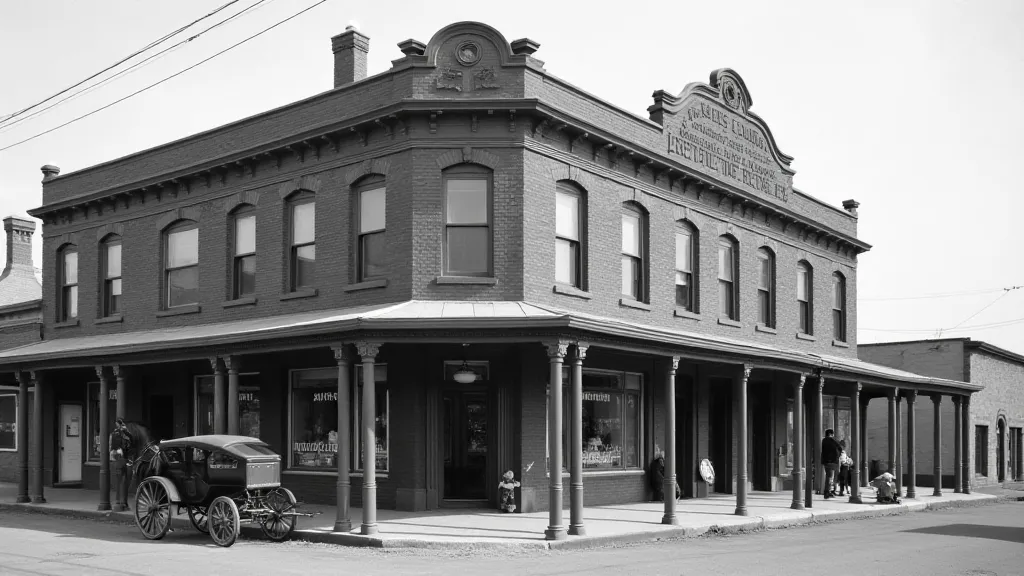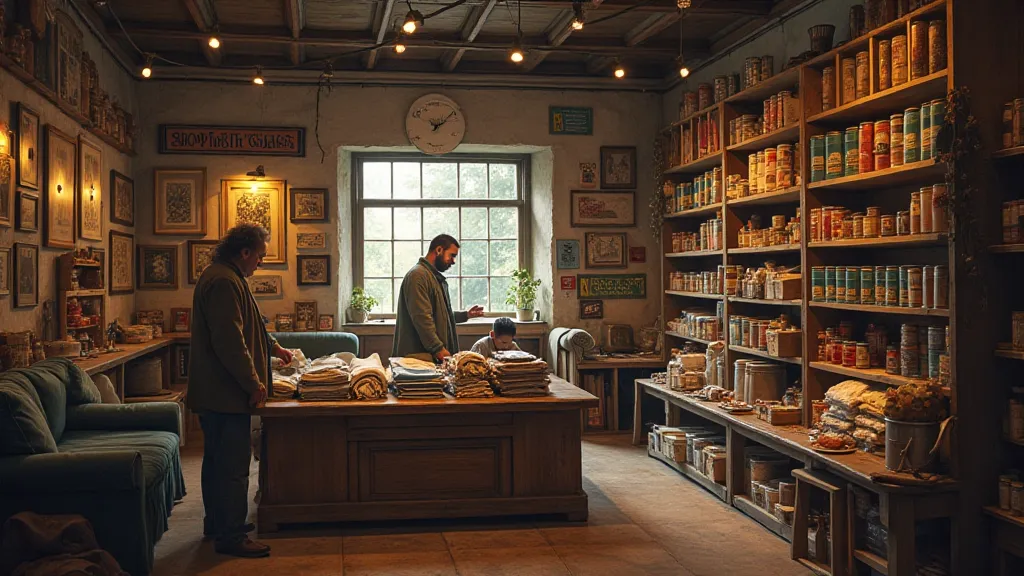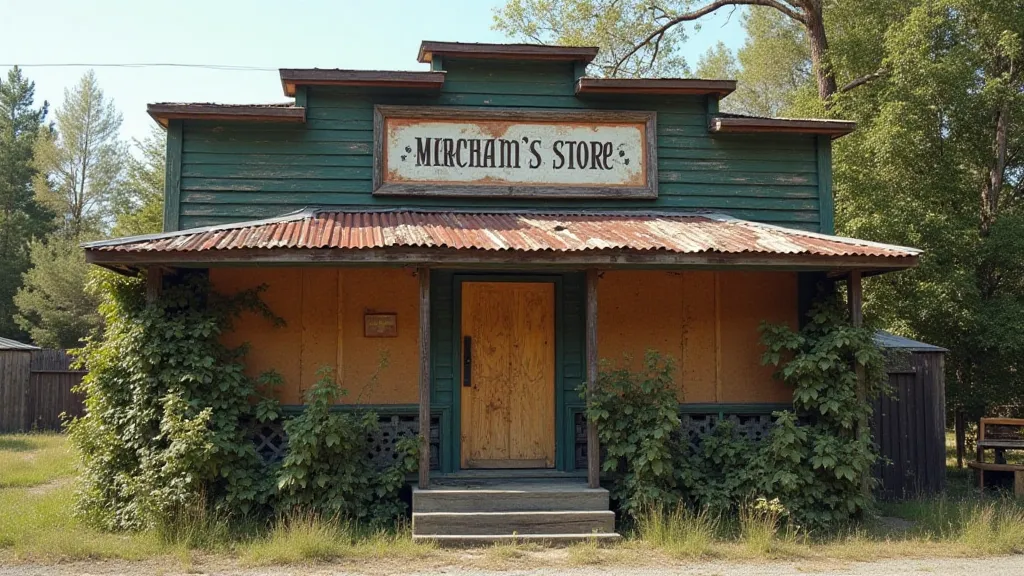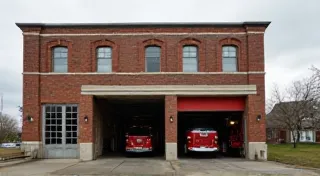The Merchant’s Store: A Hub of Commerce
Step back to a time when the Merchant’s Store was the heart of the region’s economy. Explore its history, its role in local trade, and its eventual closure.
For generations, the Merchant’s Store wasn’t just a place to buy goods; it was a vital social hub, a community meeting point, and a cornerstone of the region’s prosperity. Standing proudly at [Insert Specific Location in Region], the store, built in [Year of Construction], served as a lifeline for residents, especially during times when traveling long distances was a significant undertaking. Its existence is a tangible link to a bygone era, offering a fascinating glimpse into the lives of those who lived and worked in this area. The stories embedded in places like this highlight the importance of community touchstones, much like the old post office used to connect people across miles. It served as a crucial element of a time when communication and connection were deeply valued, fostering a sense of belonging that’s increasingly rare today.

Early Days and Family Ownership
The store’s foundation was laid by [Founder’s Name] in [Year]. Initially a modest general store catering to the farming community, it gradually expanded to encompass a wider range of goods, from dry goods and hardware to furniture and even basic necessities. [Founder’s Name]’s vision was to provide a reliable source of essential items for local families, and their commitment to fair prices and honest dealing quickly earned them a loyal customer base. The initial days, much like the establishment of institutions like the county courthouse, demanded a deep understanding of the community's needs and an unwavering commitment to serving them. It wasn’s merely about selling goods; it was about building trust and establishing a reputation for integrity – qualities that are increasingly valuable in today’s fast-paced, impersonal world.
The store remained a family-run business for decades, passing through the hands of [Successor’s Name(s)]. Each generation adapted to changing economic conditions and evolving consumer demands, introducing new products and services while maintaining the store’s reputation for quality and community service. The store served as more than a business; it was a legacy, a living testament to the dedication of a family and their unwavering belief in the value of local commerce. They understood that a local store wasn't just a point of sale, but a gathering place – a vital social infrastructure that helped bind a community together. This was especially true during the early years when the region was still finding its identity and relying heavily on the exchange of goods and services within the community.
A Reflection of Regional Trade
The Merchant’s Store played a crucial role in the region’s economic development. During the [Specific Historical Period – e.g., post-war boom, agricultural era], the store acted as a key distribution point for goods arriving from [Source of Goods – e.g., larger cities, rail lines]. Farmers would trade their crops for supplies, and local artisans would sell their wares within the store’s walls. It wasn't just a place to buy; it was a marketplace, a place of exchange and connection, fostering relationships and building a sense of shared prosperity. These were vibrant times, reminiscent of the era when the Grand Majestic Theatre was a center of entertainment and cultural exchange, drawing crowds and reflecting the region’s growing affluence. It was a place where news was shared, deals were made, and friendships were forged – a far cry from the anonymous transactions of modern retail.
The architecture of the building itself also tells a story. Built in the [Architectural Style – e.g., Victorian, Craftsman] style, its design reflected the prosperity of the region during that period. Features like the [Specific Architectural Details – e.g., pressed brick facade, ornate window trim] showcased a commitment to quality and a sense of civic pride. The care taken in the building’s design, with its enduring structure and carefully chosen materials, is also a characteristic shared with landmarks like the historic bridge, a vital connection for generations. The very design communicated a sense of permanence and reliability – qualities that were essential for establishing trust with the community. The building wasn’t just a structure; it was a symbol of the region's ambition and resilience.

Adapting to Change and the Rise of Competition
The 20th century brought significant shifts in the economic landscape, and the Merchant’s Store was not immune. Improvements in transportation, particularly the proliferation of automobiles and trucking, made it easier for larger chain stores to penetrate the region. These newcomers offered a wider selection of goods at competitive prices, posing a direct challenge to the store’s established dominance. While the store owners diligently sought ways to adapt – expanding product lines to include modern appliances and embracing rudimentary advertising techniques – the pressure mounted. They understood that simply maintaining the status quo wasn’t an option; they needed to evolve to meet the changing demands of the market. But adaptation is a delicate balancing act – preserving the essence of what made the store special while embracing new ways of doing business.
The challenges faced by the Merchant’s Store mirror the broader evolution of commerce and the increasing specialization of services. The allure of a single stop for all needs, a convenience hard to resist, gradually eroded the loyalty that had sustained the store for so long. The family owners experimented with various strategies, from hosting community events to offering credit to long-time customers, but the tide seemed unstoppable. The lure of lower prices and greater variety often outweighed the value of personal relationships and the sense of community that the Merchant’s Store provided. It's a story of how the pursuit of efficiency and choice can sometimes come at the expense of something more intangible – the fabric of a community itself.
Decline and Closure
Like many local businesses, the Merchant’s Store faced challenges as the region modernized. The rise of larger chain stores, improved transportation, and changing consumer habits gradually eroded its customer base. While attempts were made to adapt – offering new product lines and embracing modern marketing techniques – the store ultimately succumbed to the pressures of the changing landscape. The very nature of connecting with the community also shifted, moving away from personal interaction to more impersonal methods, much like the methods used to communicate across distances. The shift represented a broader societal change – a move away from close-knit communities and towards a more fragmented, individualistic culture.
The final closure of the Merchant’s Store in [Year of Closure] marked the end of an era. Its doors closed, not with a bang, but with a quiet sense of loss for the community it had served for so long. The silence left behind echoed the stories and shared memories built within its walls. The building, once a symbol of prosperity and community, stood as a poignant reminder of a time when local businesses were the heart and soul of the region. It wasn't just the loss of a store; it was the loss of a vital community hub, a place where people could connect, share, and build relationships.

The Legacy and Lessons Learned
Despite its closure, the legacy of the Merchant’s Store continues to resonate within the region. The echoes of laughter, the clatter of goods being exchanged, and the sense of belonging—these intangible aspects remain imprinted on the memories of countless residents. Efforts are underway to preserve its memory through [mention any preservation efforts - e.g., historical society initiatives, local archives, potential restoration projects]. The stories of the store’s impact on the community deserve to be retold, ensuring that future generations understand the vital role local businesses once played. Preserving these memories is crucial, not just for historical accuracy, but to remind us of the value of community and connection.
The decline of the Merchant's Store serves as a valuable case study in the changing face of commerce. While progress and modernization are inevitable, it's crucial to recognize the importance of preserving local identity and fostering a sense of community. The story highlights the delicate balance between embracing change and maintaining the unique character that defines a region. The loss is a stark contrast to the enduring appeal of structures that offer connections and shared experiences, like the enduring presence of the historic bridge. It's a reminder that progress should not come at the expense of our heritage or our sense of belonging.
The challenges the Merchant's Store faced were not unique. Many businesses, deeply rooted in the fabric of the region, succumbed to similar pressures. The story offers invaluable lessons about the importance of adaptation, community engagement, and the preservation of local heritage. It compels us to reconsider the true cost of progress and to actively seek ways to support the businesses that shape our communities. Perhaps, by understanding the factors that led to the Merchant's Store’s decline, we can better equip ourselves to support local businesses today.
The spirit of the Merchant’s Store, though dormant, can be rekindled. By remembering its contributions and honoring its legacy, we can inspire a new generation of entrepreneurs who are committed to building strong, vibrant, and locally-focused businesses. The lessons learned from this experience are invaluable and should guide our efforts to create a more sustainable and community-centered future. It’s a call to action – to actively support the businesses that contribute to the unique character and vitality of our communities. Supporting local businesses isn't just about economics; it's about preserving our heritage and fostering a sense of belonging.
Ultimately, the story of the Merchant’s Store is a microcosm of broader societal shifts – a reminder that the pursuit of efficiency and convenience can sometimes come at the cost of something far more valuable: the fabric of community itself. It encourages us to reflect on the values we prioritize as a society and to actively seek ways to create a future where economic progress and community well-being go hand in hand. Perhaps, by learning from the past, we can build a more connected and resilient future – a future where local businesses thrive and communities flourish.





